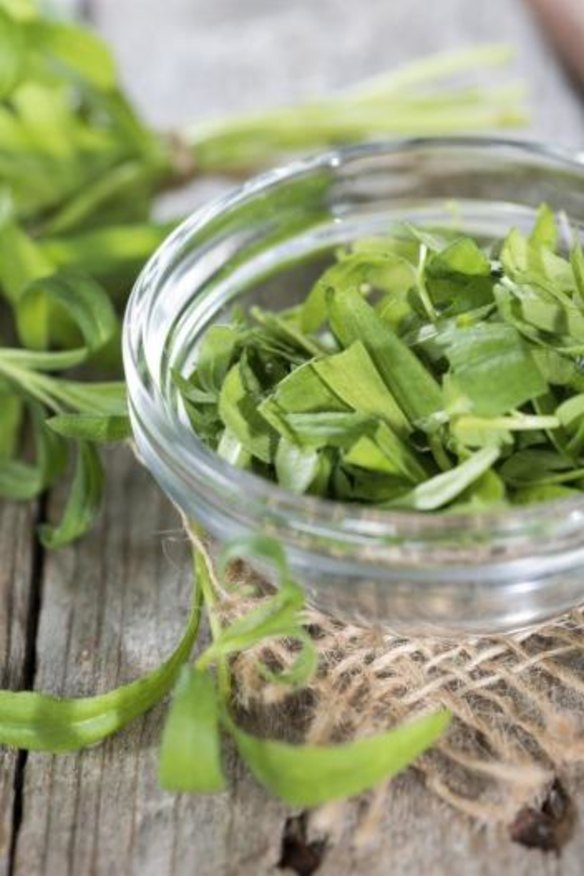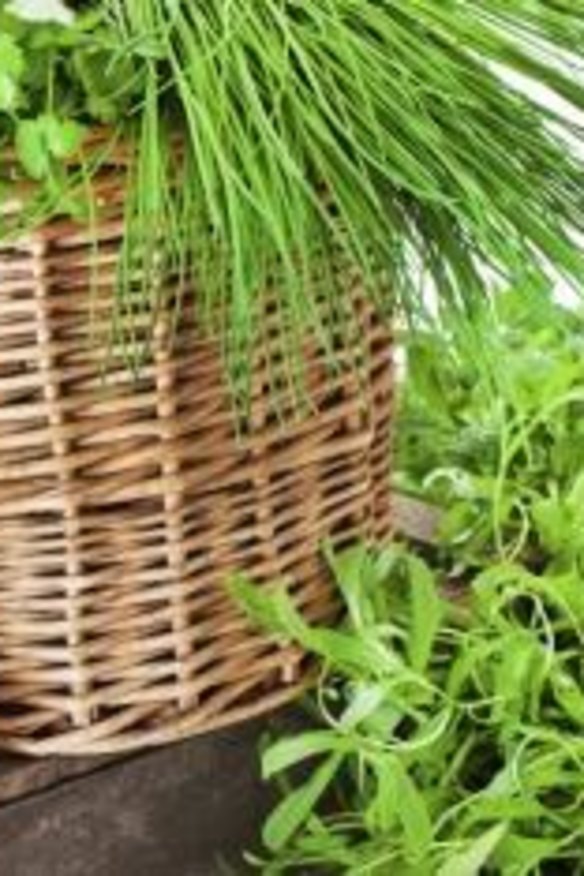Fines herbes for planting in Canberra's winter

Just as we have celebrated Bastille Day with our French friends, I paid a visit to my local village of Hall for some more garden supplies. The Canberra Stockfeeds and Rural Supplies is one of the best regional suppliers of stockfeeds and animal requirements, extending to horses, cattle, sheep and domestic animals. This locally owned firm has also been a very reliable source of organic supplies including sugar cane mulch and certified organic fertilisers.
During my visit my eyes were drawn to stand displaying packets of garden seed, with the main brand in bright green, Vilmorin. Vilmorin is a supplier of quality seeds from France, with a history dating back to 1743. That’s right, some 40 years before European settlement in Australia, the firm was growing and distributing quality seed. I asked why they were stocking this supplier. The response was convincing: “Because they supply a quality product and each packet is really filled with good seed.” I selected the chervil and the chives.
Midwinter is a time when little can be planted in the vegetable garden but much is being planted in the orchard and berry patches. We have completed replanting our strawberry beds, set up two extra rows of asparagus and begun to cut away our old brambleberry vines and tie up the new season vines. But there are some herbs that can be planted, along with the planting out of the onion seedlings.

Fines herbes is the special, delicate select group of herbs used by French chefs over the centuries to enhance the flavour many meat and egg dishes. Chervil, chives, French tarragon and parsley. These herbs deserve our attention now and you can easily grow your own supplies.
Chervil is a hardy annual with tiny white flowers and light green, fern like leaves. The leaves are rich in carotene, iron, magnesium and Vitamin C. Chervil has a delicate flavour akin to parsley with a touch of aniseed. Grown from seed, it will geminate quickly in spring. It only takes six-eight weeks for the first leaves to be big enough to use.
Chives are another hardy perennial which provide bountiful crops of delicately flavoured, thin, cylindrical leaves. We have most of our chives growing beside our roses. You can take existing clumps and replant small sub clumps of five-eight bulbs, allowing 12-15 centimetres apart. Alternatively, you can plant seed in late winter into seed raising trays or in spring directly into the garden bed, when the soil has warmed. Chives are easy to grow and tend in kitchen pots and wilndowsill boxes but if you do, avoid situating them where the hot afternoon summer sun can quickly dry them out. Keep chives well watered and provide a liquid seaweed watering regularly.

The thin leaves of French shallots are an alternative to chives in fines herbes cooking. Shallots are small onion type plants with a more delicate flavour than the larger cousin. The teardrop-shaped bulbs grow in clusters and to propagate, simply divide the separate bulbs and plant the bulblets as you would garlic. Plant out in late autumn and during the winter months. Dig in plenty of well rotted compost before planting to provide lots of humus.
Tarragon is a perennial which is also quite hardy. It comes from southern Europe. By the time of Henry VIII, it had been taken to England and was planted in the royal gardens. There are two main varieties grown today, the French tarragon and the hardy Russian tarragon, from Siberia. French tarragon is the preferred variety for cooking, with its delicate flavour. It complements many meat dishes and is well used in rice and tomato dishes.
Tarragon should be renewed after three years. Both can be propagated by cutting but only the Russian variety will grow successfully from seed. Early spring is the time to dig up and pull apart the roots with their growing nodules. Select suitable lengths to plant into 8-10cm pots and cover with compost. Plant them later into the garden when the specimens have become well rooted. Plant in a warm and sunny location or grow in large display trays. Over winter provide protection to outdoor plants.
Parsley is more widely known and used in Western countries as a staple garnish. This grows well in the Canberra region but you need to plant the seed in situ or allow some of your existing plants go to seed. It does not take easily to transplanting. It is a gross feeder so you need to be growing it in good, deep soil with plenty of compost or well rotted manure dug in before the planting season. The French parsley is the preferred one for kitchen use.
Omelette with fines herbes
1 tbsp butter
2 shallots, finely chopped
2 cloves garlic, crushed
2 tbsp parsley, chopped
½ tbsp tarragon, chopped
2 tbsp basil, finely chopped
8 free range eggs
3 tbsp double cream
salt to taste
Melt the butter in a frying pan and cook the shallots and garlic over low heat until tender. Mix in the herbs then place all these ingredients into a bowl. Beat up the eggs and cream with a whisk until smooth and add in the mixture of herbs.
The mixture is sufficient for four individual omelettes. Lightly oil a non stick frying pan and pour in one-quarter of the mixture. Cook at a low heat until the omelette is browned underneath and just cooked on the top. Fold over one-third of the omelette and then the other exterior third to create a compact omelette for serving.
Roast lamb with fines herbes
1 leg of lamb
2 tbsp parsley, finely chopped
2 tbsp tarragon, finely chopped
1 tbsp chives, finely chopped
1 tbsp chervil, chopped
salt and ground pepper
60gm butter
4 tbsp fine breadcrumbs
2 tbsp olive oil
Mix the parsley, tarragon, chives and thyme in a bowl and season with salt and pepper. Add the butter and breadcrumbs and mix in well.
Preheat the oven to 180°C. Rub the herb mixture over the leg of lamb. Heat the olive oil in the roasting tray then place the leg of lamb into the tray. Add in a selection of vegetables, such as potatoes, sweet potato, pumpkin, capsicum and onion. Roast for 25 minutes for each kilo of meat. Then turn off the heat and rest the meat in the oven for about 10 minutes.
This week in the garden
Begin digging over garden beds for late winter and early spring plantings. Dig in green manure crops that have been planted earlier.
Ensure to plant out any new stonefruit and almond trees this week as they will begin their spring growth period well before the apple and pear trees.
For most successful pruning of fruit trees and bramble vines, keep your secateurs sharpened with a small file, remove sap with steel wool and wipe over with a clean cloth with methylated spirits.
Spray citrus trees with light winter oil to smother scale and other leaf insect pests.
Owen Pidgeon runs the Loriendale Organic Orchard near Hall.
Restaurant reviews, news and the hottest openings served to your inbox.
Sign up